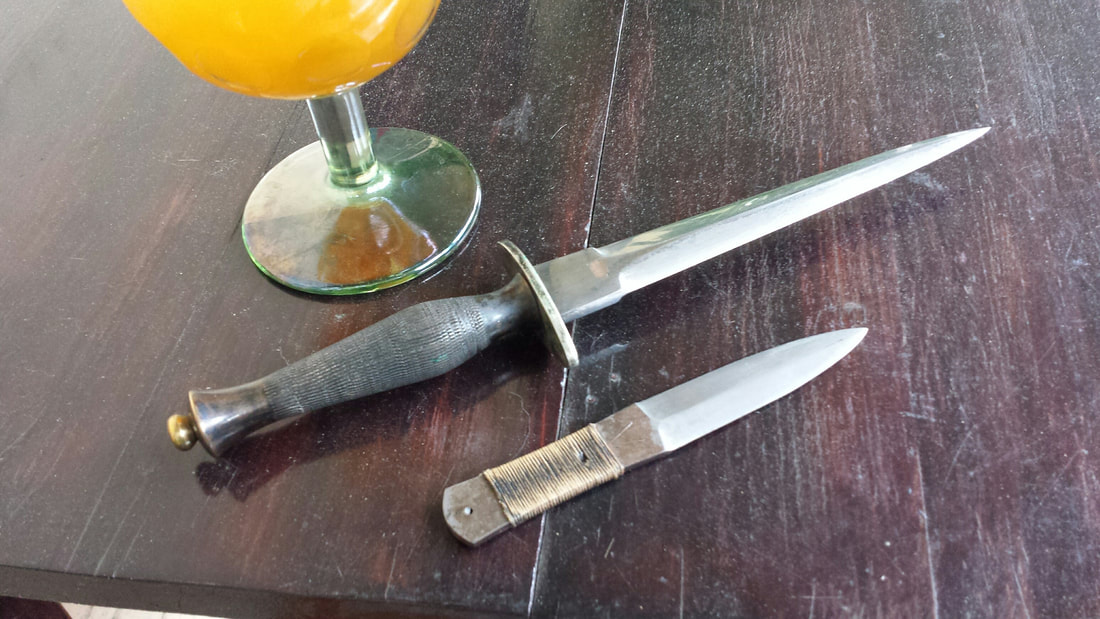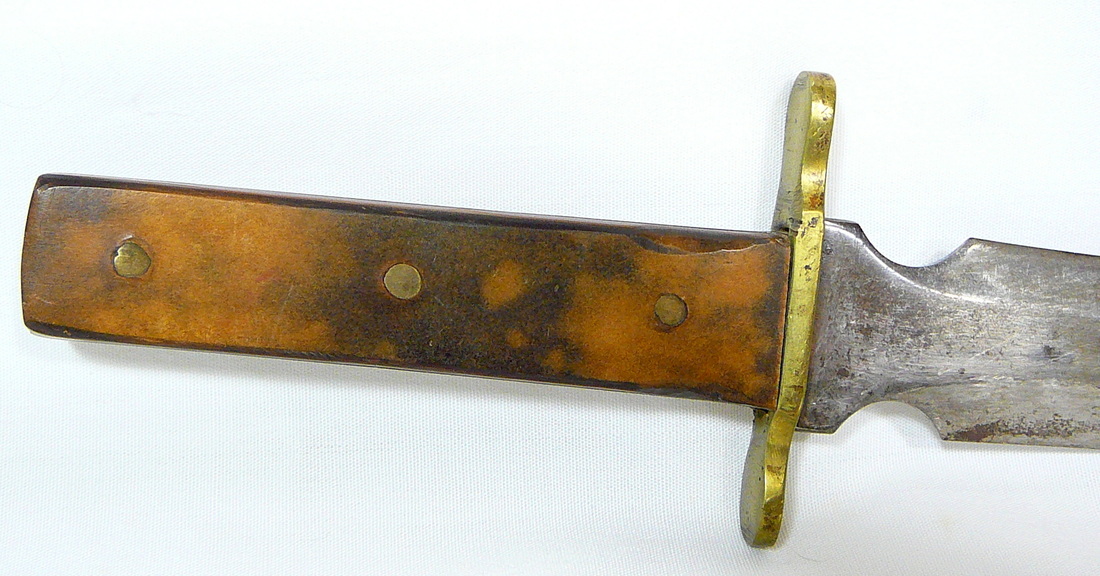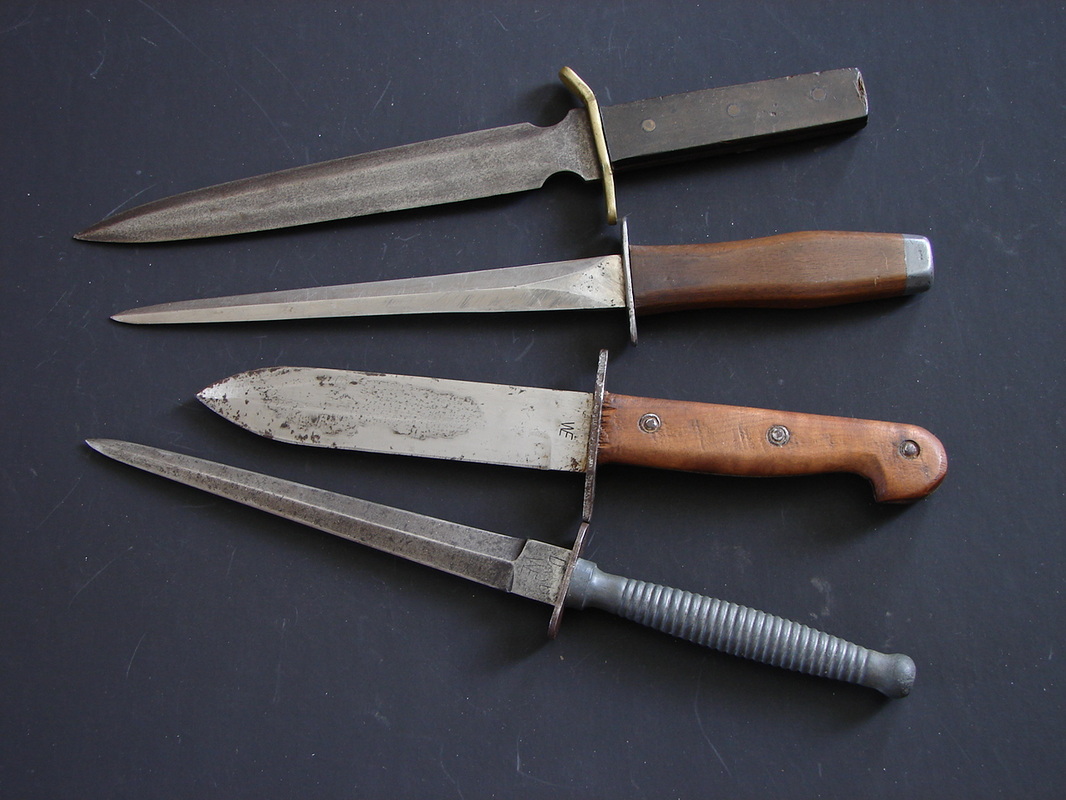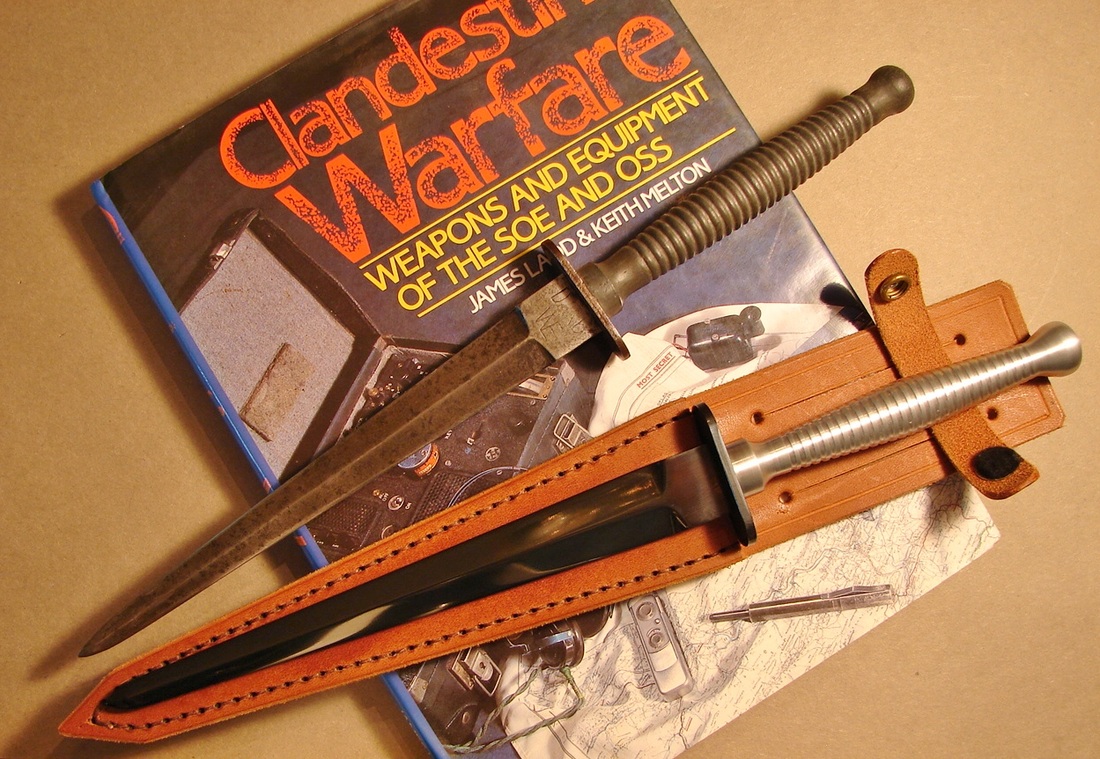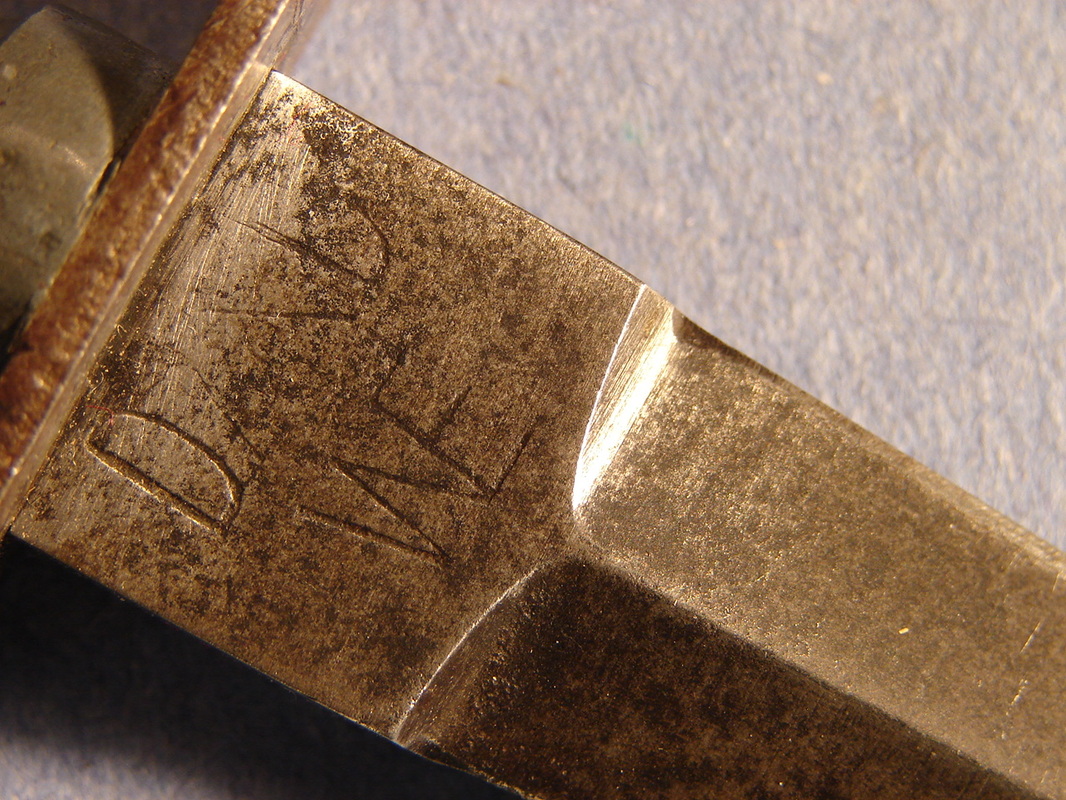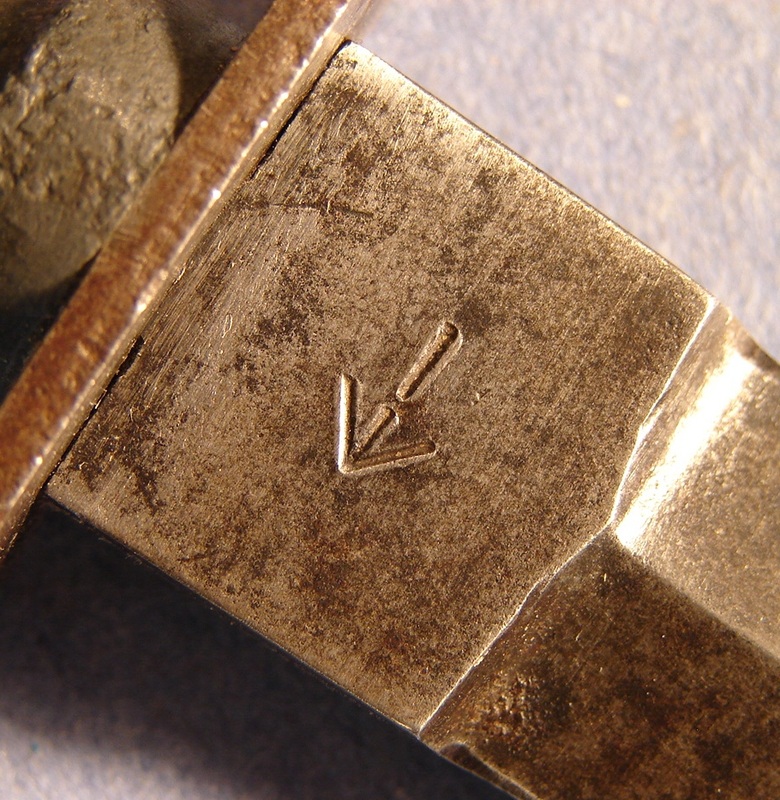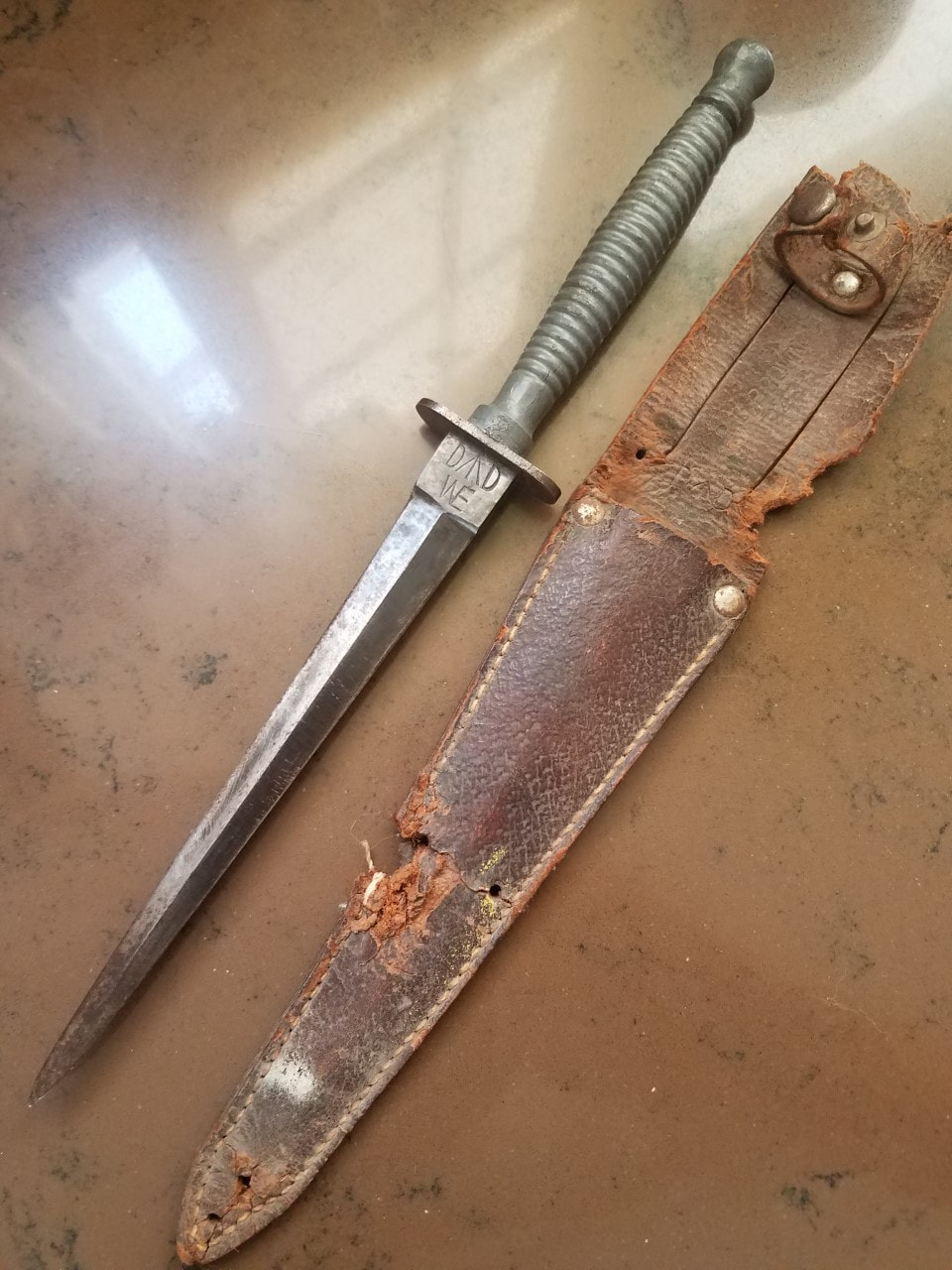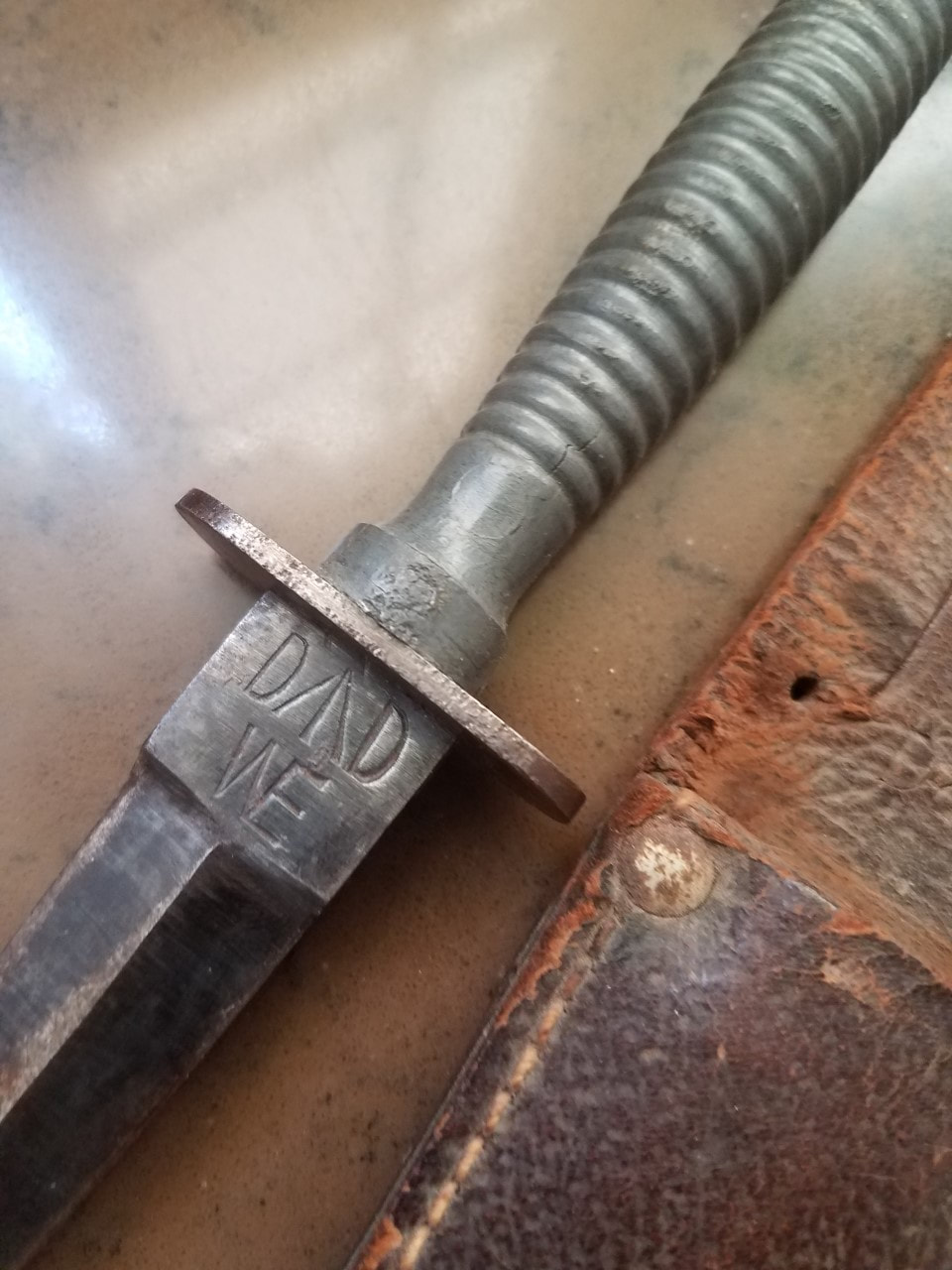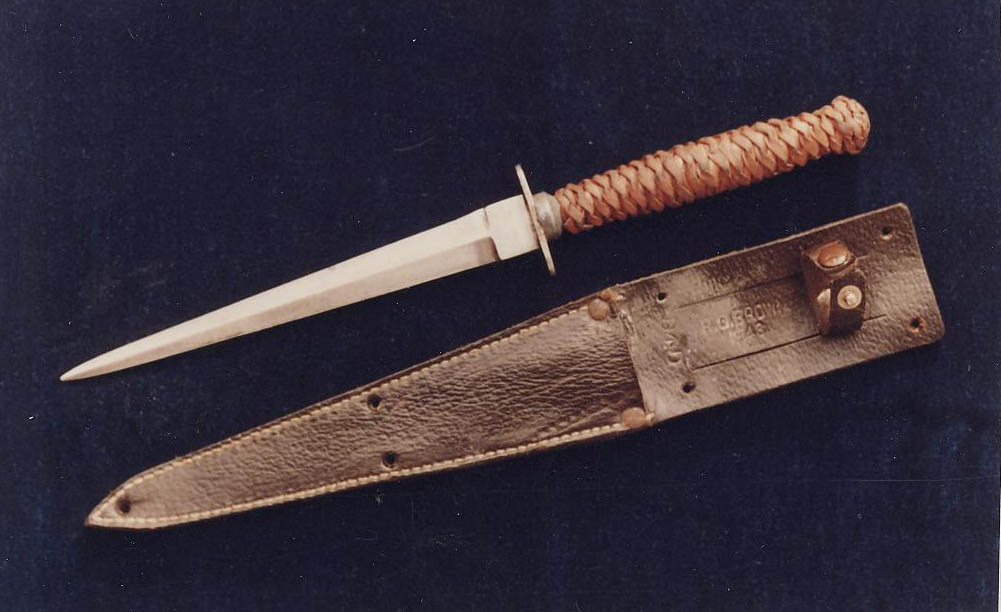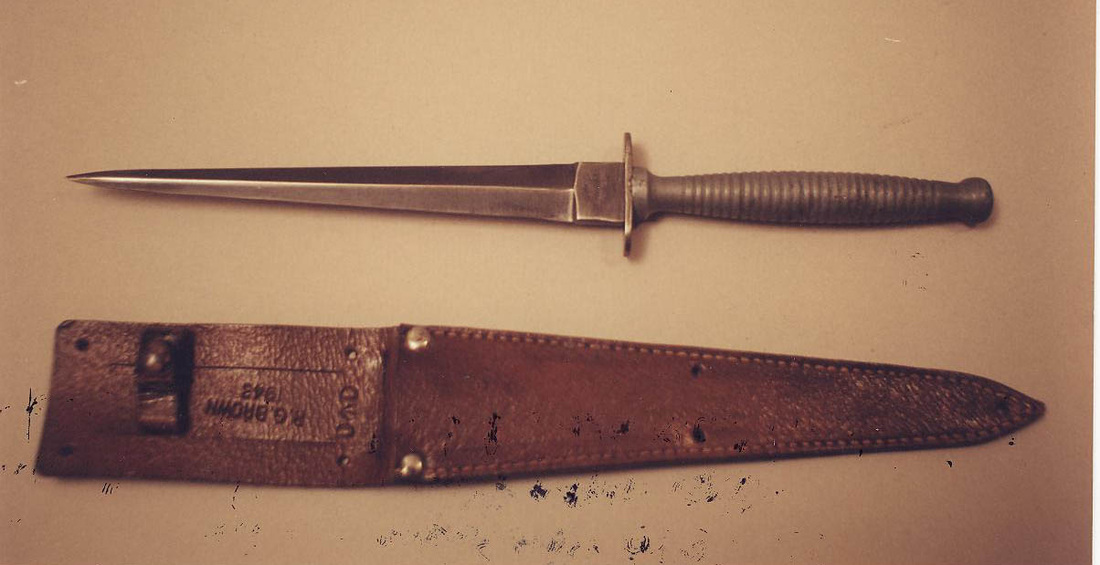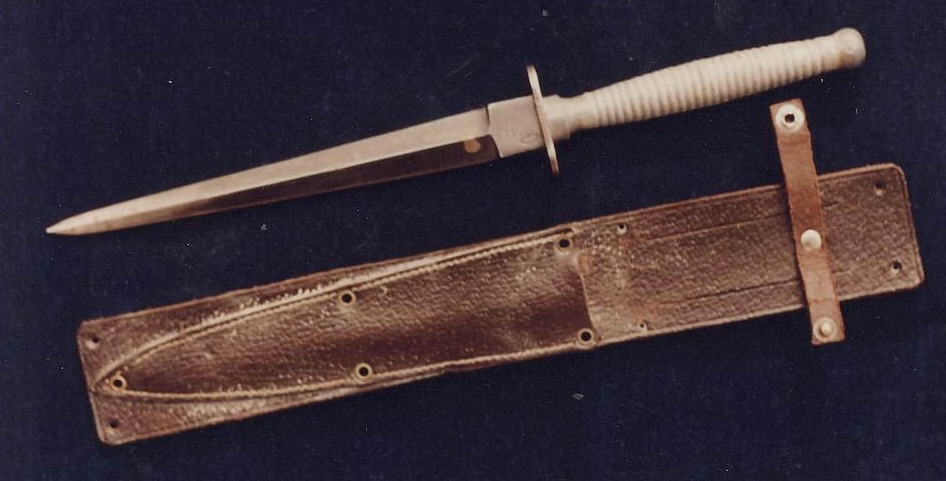Australian Commando Knives:
Below: Australian or Indian? This great knife is also illustrated in our section on First Pattern knives. I decided to include it here too because the sheath has the stamping for the Australian Dept. of Defense. The Guard is stamped "GUP" which is the name of a town in India. Was it made in India? Possibly. It is likely a knife that was carried in the CBI theater of operations.
A visitor to our site emailed us the following photos of this fine and rare Australian knife. Thanks to this sort of sharing we can bring you knives from all over the world. This is obviously by the same company who made the top knife in the following group photo but it is a much finer version. This one is also in what looks like the original sheath. Thanks Steve for the use of your photos. Amazing how much the blade looks like a Randall Model 2.
Descriptions of the knives in the large photo below.
|
TOP Knife: the top knife is listed in Ron Flook's book "British and Commonwealth Military Knives" page #177 plate #418. Flook relates that two of these blades were found without handles in the old Gregsteel factory. Reportedly one (finished knife) was known to have been carried by an Australian in the fighting in New Guinea. Flook also says there is some dispute whether Gregsteel made the blades or the "Ernst Brothers" Company did. The two blades he illustrates are identical to mine even down to the placement of the holes for the three handle rivets. The handle of our knife appears to be original to it and made of some compressed paper product like what we call Masonite. The blade on my knife is completely unsharpened, that, and the odd choice of handle material lead me to question if it was a prototype. No sheath came with this knife.
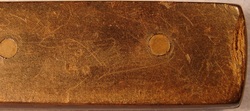
Note the thin layers exposed where the handle is bruised.
Second Knife: The origin of the second knife down is speculative. I bought it with no known provenance. A tracing of the blade is exactly identical to the Whittingslowe knife at the bottom of the photo. The only exception is this one is a little bit thinner in cross-section. I propose that either someone ground it down (maybe from a factory reject blade which had the company name ground off, reducing away the nice ricasso), or perhaps someone copied an Australian Commando knife and added the simple walnut handle. The soft cast alloy pommel does an excellent job of balancing the knife.
|
Third Knife: The third knife down is of Whittingslowe manufacture, as clearly indicated by the WE stamping in the blade. A simple spear point knife, made of thin stock with a steel cross-guard, and what appears to be a Beech type, "birds-head" shaped wooden handle. Crudely made from the beginning, it is called a commando knife by some although it looks more suited for utilitarian purposes to my "opinionated" eyes. The handle scales are solidly held in place by three steel rivets. Although not at all elegant, it would get the job done. The blade is rather short for thrusting attacks against an opponent whom might be encumbered with all sorts of gear.
Fourth Knife: The last knife in the photo is the rather rare Australian Stiletto. I have no idea how many were made. Some came fitted with this cast alloy handle and others with a similarly shaped lathe turned wood handle. I believe the wood handled ones are even more rare due to the shrinkage and cracking of the wooden handles over time. Anyway, this is the only one I found for sale in my many years of collecting. Shown below is the standard sheath which is a fragile affair made from very thin leather. The WE Commando knife is much stouter than the British F~S and it also has a longer blade. The heavy round tang extends the length of the handle and is visible at the butt end. There is no top nut used in the assembly. All in all, a very solid fighting knife. They deserved a better sheath.
|
Below: Illustrated here is our original Whittingslowe with a modern recreation from a talented knife maker in Australia. We ordered the repro with sheath and wooden storage box. It is a superb replica, and a credible fighting knife. Although reproductions do not generally rise in value as quickly as originals, given a few years their value does climb. Of course this is true only IF the quality was good to begin with. (A splendid example of this are the American Historical Foundation's Commando knives seen on the "Commemoratives" page.) The repro has a lathe turned aluminum handle which is lighter than the original's, therefore it is lacking the balance of the original. The blade is accurately ground and deeply gun-blued.
|
Illustrated below is a close-up of the WE stampings and the Department of Defense acceptance stamp on the ricasso of the original Commando Knife.
The depths of the grind near the ricasso give you a sense of the thickness of the blade. Also if you note in the full length photos above, the blade does not taper down to the needle-tip of the Fairbairns, but is blunter, giving it more strength.
|
Below: Broad arrow aceptance mark heavily struck into the reverse side.
|
The following Australian stiletto came into my possession in July 2021. It is not in quite as good condition as my first specimen but they are hard to find in any condition! I particularly like the look of the wood hilted ones but most of them have badly split handles due to shinkage of the wood. This alloy hily has numerous small cracks similar to those often found in the USMC Stiletto hilts.
The Following Fine Examples Are Not Mine
Below: Images of another fine example of a WE Australian Commando knife provided by a visitor to our site.
Below: An exceptional Australian Commando knife with the metal handle neatly wrapped with leather. It would appear the owner objected to the feel of the metal or perhaps it became uncomfortably hot to handle. Photo credits to my friend, the current owner.
Below: These are some old photos so the quality is not great. Anyway, here is another very nice Australian Commando knife from the same collector. I am very partial to this model and think it is superior in many ways to the Wilkinson knife. The biggest negative is the cheap quality sheath. They are very thin and flimsy. It is amazing that any of them survived.
Below: And the final one from my friend's collection. (Yes I do have a friend.) This one has a different model sheath which looks more commercial yet still made of very thin leather.
